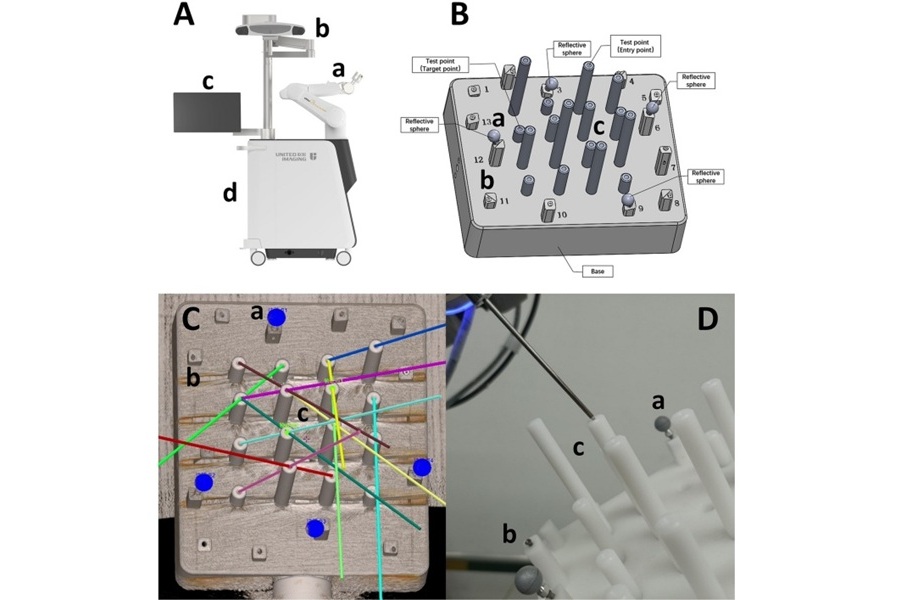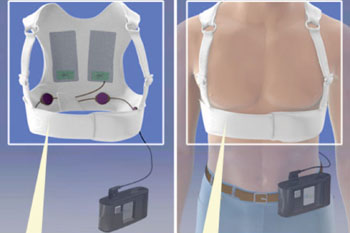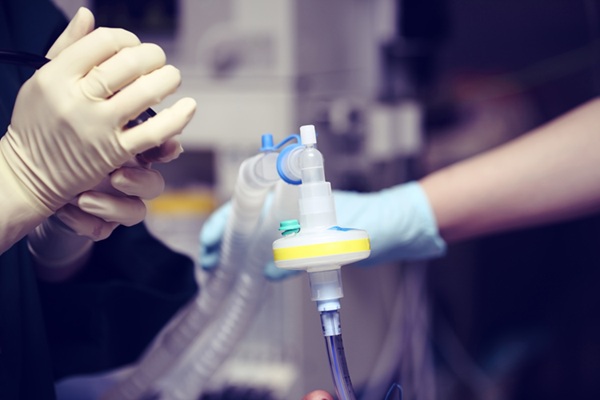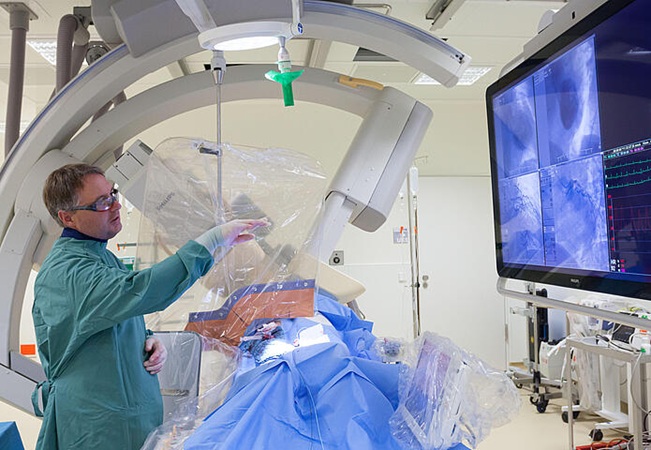Wearable Defibrillator Protects Children at Risk
|
By HospiMedica International staff writers Posted on 28 Dec 2015 |
A novel wearable defibrillator now offers an advanced protection and monitoring option for children at risk of sudden cardiac arrest.
The LifeVest is a wearable defibrillator, which unlike an implantable cardioverter defibrillator (ICD) is worn on the body (under clothing), rather than implanted into it. Weighing less than one kilogram, the device consists of two main components: an electrode belt and vest-like garment that surround the patient’s chest, and a monitor that the patient wears around the waist. The pediatric device is intended only for children weighing at least 18 kg and with a chest size of 66 cm or more, which is about the size of an average eight year old.
The device continuously monitors the patient's heart using dry, non-adhesive sensing electrodes that detect abnormal heart rhythms. If such a life-threatening cardiac rhythm is detected, the device alerts the patient prior to delivering a shock, thus allowing a conscious patient to postpone the treatment shock. If, on the other hand, the patient is unconscious, the device releases a special gel over the therapy electrodes and delivers an electrical shock to restore normal rhythm.
The LifeVest Wearable Cardioverter Defibrillator is a product of Zoll Medical Corporation (Zoll; Chelmsford, MA, USA), and has been approved by the US Food and Drug Administration (FDA) for children who are at risk for sudden cardiac arrest, but are not candidates for an ICD due to certain medical conditions or lack of parental consent. The device was previously approved in 2001 for patients 18 years of age and older.
“The pediatric medical community is often forced to use adult devices off-label without appropriate labeling or instructions for use in pediatric patients,” said Vasum Peiris, MD, MPH, chief medical officer of pediatrics and special populations in the FDA Center for Devices and Radiological Health (CDRH). “Doctors now have important information that may help them safely prescribe this life-saving device to young patients who may benefit from the device.”
Ventricular fibrillation (VF) and ventricular tachycardia (VT) are life-threatening abnormal heart rhythms that are the most common cause of sudden cardiac arrest (SCA), according to the US National Heart, Lung and Blood Institute (Bethesda, MD, USA). Certain diseases and conditions that can lead to SCA include heart disease, inherited disorders, and structural changes in the heart due to infection or congenital heart disease. Most people who have SCA die from it, often within minutes. Rapid treatment with a defibrillator can save lives.
Related Links:
Zoll Medical Corporation
US National Heart, Lung and Blood Institute
The LifeVest is a wearable defibrillator, which unlike an implantable cardioverter defibrillator (ICD) is worn on the body (under clothing), rather than implanted into it. Weighing less than one kilogram, the device consists of two main components: an electrode belt and vest-like garment that surround the patient’s chest, and a monitor that the patient wears around the waist. The pediatric device is intended only for children weighing at least 18 kg and with a chest size of 66 cm or more, which is about the size of an average eight year old.
The device continuously monitors the patient's heart using dry, non-adhesive sensing electrodes that detect abnormal heart rhythms. If such a life-threatening cardiac rhythm is detected, the device alerts the patient prior to delivering a shock, thus allowing a conscious patient to postpone the treatment shock. If, on the other hand, the patient is unconscious, the device releases a special gel over the therapy electrodes and delivers an electrical shock to restore normal rhythm.
The LifeVest Wearable Cardioverter Defibrillator is a product of Zoll Medical Corporation (Zoll; Chelmsford, MA, USA), and has been approved by the US Food and Drug Administration (FDA) for children who are at risk for sudden cardiac arrest, but are not candidates for an ICD due to certain medical conditions or lack of parental consent. The device was previously approved in 2001 for patients 18 years of age and older.
“The pediatric medical community is often forced to use adult devices off-label without appropriate labeling or instructions for use in pediatric patients,” said Vasum Peiris, MD, MPH, chief medical officer of pediatrics and special populations in the FDA Center for Devices and Radiological Health (CDRH). “Doctors now have important information that may help them safely prescribe this life-saving device to young patients who may benefit from the device.”
Ventricular fibrillation (VF) and ventricular tachycardia (VT) are life-threatening abnormal heart rhythms that are the most common cause of sudden cardiac arrest (SCA), according to the US National Heart, Lung and Blood Institute (Bethesda, MD, USA). Certain diseases and conditions that can lead to SCA include heart disease, inherited disorders, and structural changes in the heart due to infection or congenital heart disease. Most people who have SCA die from it, often within minutes. Rapid treatment with a defibrillator can save lives.
Related Links:
Zoll Medical Corporation
US National Heart, Lung and Blood Institute
Read the full article by registering today, it's FREE! 

Register now for FREE to HospiMedica.com and get access to news and events that shape the world of Hospital Medicine. 
- Free digital version edition of HospiMedica International sent by email on regular basis
- Free print version of HospiMedica International magazine (available only outside USA and Canada).
- Free and unlimited access to back issues of HospiMedica International in digital format
- Free HospiMedica International Newsletter sent every week containing the latest news
- Free breaking news sent via email
- Free access to Events Calendar
- Free access to LinkXpress new product services
- REGISTRATION IS FREE AND EASY!
Sign in: Registered website members
Sign in: Registered magazine subscribers
Latest Critical Care News
- Earlier Blood Transfusion Could Reduce Heart Failure and Arrhythmia in Heart Disease Patients
- 'Smart' Shirt Detects Epileptic Seizures in Real Time
- Skin Patch Measures Effectiveness of Flu/COVID Vaccines in 10 Minutes
- Complete Revascularization Reduces Risk of Death from Cardiovascular Causes
- Tiny Fish-Inspired Robots Navigate Through Body to Deliver Targeted Drug Therapy
- Coronary Artery Stenosis Could Protect Patients from Pulmonary Embolism Effects
- Sweat-Powered Sticker Turns Drinking Cup into Health Sensor
- Skin-Mounted 3D Microfluidic Device Analyzes Sweat for Real-Time Health Assessment
- New Therapeutic Brain Implants to Eliminate Need for Surgery
- Stem Cell Patch Gently Heals Damaged Hearts Without Open-Heart Surgery
- Biomaterial Vaccines to Make Implanted Orthopedic Devices Safer
- Deep Learning Model Predicts Sepsis Patients Likely to Benefit from Steroid Treatment
- Programmable Drug-Delivery Patch Promotes Healing and Regrowth After Heart Attack
- Breakthrough Ultrasound Technology Measures Blood Viscosity in Real Time
- Magnetically Activated Microscopic Robotic Swarms Could Deliver Medicine Inside Body
- Frequent ECG Use Can Identify Young People at Risk of Cardiac Arrest
Channels
Surgical Techniques
view channel
Ablation Reduces Stroke Risk Associated with Atrial Fibrillation
Atrial fibrillation (AFib) greatly increases the risk of stroke, blood clots, heart failure, and death, and millions of people in the U.S. are expected to be affected in the coming years.... Read more
Optical Tracking Method Identifies Target Areas in Robot-Assisted Neurosurgery
Epilepsy occurs when nerve cells misfire and produce uncontrolled electrical bursts in the brain, leading to seizures. While most patients respond to medication, about 30% require more advanced intervention.... Read morePatient Care
view channel
Revolutionary Automatic IV-Line Flushing Device to Enhance Infusion Care
More than 80% of in-hospital patients receive intravenous (IV) therapy. Every dose of IV medicine delivered in a small volume (<250 mL) infusion bag should be followed by subsequent flushing to ensure... Read more
VR Training Tool Combats Contamination of Portable Medical Equipment
Healthcare-associated infections (HAIs) impact one in every 31 patients, cause nearly 100,000 deaths each year, and cost USD 28.4 billion in direct medical expenses. Notably, up to 75% of these infections... Read more
Portable Biosensor Platform to Reduce Hospital-Acquired Infections
Approximately 4 million patients in the European Union acquire healthcare-associated infections (HAIs) or nosocomial infections each year, with around 37,000 deaths directly resulting from these infections,... Read moreFirst-Of-Its-Kind Portable Germicidal Light Technology Disinfects High-Touch Clinical Surfaces in Seconds
Reducing healthcare-acquired infections (HAIs) remains a pressing issue within global healthcare systems. In the United States alone, 1.7 million patients contract HAIs annually, leading to approximately... Read moreHealth IT
view channel
Printable Molecule-Selective Nanoparticles Enable Mass Production of Wearable Biosensors
The future of medicine is likely to focus on the personalization of healthcare—understanding exactly what an individual requires and delivering the appropriate combination of nutrients, metabolites, and... Read moreBusiness
view channel
Philips and Masimo Partner to Advance Patient Monitoring Measurement Technologies
Royal Philips (Amsterdam, Netherlands) and Masimo (Irvine, California, USA) have renewed their multi-year strategic collaboration, combining Philips’ expertise in patient monitoring with Masimo’s noninvasive... Read more
B. Braun Acquires Digital Microsurgery Company True Digital Surgery
The high-end microsurgery market in neurosurgery, spine, and ENT is undergoing a significant transformation. Traditional analog microscopes are giving way to digital exoscopes, which provide improved visualization,... Read more
CMEF 2025 to Promote Holistic and High-Quality Development of Medical and Health Industry
The 92nd China International Medical Equipment Fair (CMEF 2025) Autumn Exhibition is scheduled to be held from September 26 to 29 at the China Import and Export Fair Complex (Canton Fair Complex) in Guangzhou.... Read more
















